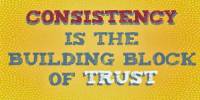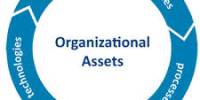In psychology and organizational behavior, psychological safety refers to an individual’s view of their ability to express themselves, take chances, and be vulnerable in a social or work environment without fear of negative repercussions. It is an important aspect of creating a healthy and effective workplace or social environment. It is a vital aspect in supporting innovation and collaboration, as well as providing a healthy and productive work or social atmosphere.
Here are some key points to understand about psychological safety:
- Open Communication: Individuals feel secure speaking up, sharing ideas, asking questions, and providing feedback in psychologically safe environments because they are not afraid of being mocked, ignored, or punished.
- Trust and Respect: The foundations of psychological safety are trust and respect. People must have faith that their coworkers or superiors will regard their thoughts and contributions with dignity and fairness.
- Risk-Taking: It motivates people to take measured chances and innovate without fear of repercussions if things don’t go as planned. This can lead to increased creativity and problem-solving abilities.
- Learning from Mistakes: Mistakes are considered as chances for learning and progress rather than reasons for blame or punishment in psychologically secure circumstances. This mindset can foster a culture of constant improvement.
- Inclusivity and Diversity: Psychological safety is closely tied to inclusivity and diversity efforts. When people from various backgrounds and perspectives feel safe to express themselves, it can lead to richer discussions and better decision-making.
- Leadership Role: Leaders are critical in establishing and sustaining psychological safety within a company. Their actions and reactions set the tone for the entire office. Leaders that are supportive and compassionate are more likely to create a psychologically safe environment.
- Feedback and Conflict Resolution: Individuals are more ready to join in talks and communicate their problems in psychologically safe contexts, making constructive criticism and conflict resolution simpler.
Many organizations now understand the value of psychological safety and are looking for ways to measure and improve it. Some of the instruments used to assess psychological safety within a group or organization include surveys, feedback mechanisms, and cultural assessments.
Employee well-being and performance are inextricably connected to psychological safety. People are more engaged, motivated, and likely to provide their best efforts when they feel safe at work. Assessing psychological safety can be difficult, yet it is critical for organizations. Psychological safety can be measured and improved via surveys, focus groups, and feedback methods.
Psychological safety is an important feature of both professional and social situations because it fosters collaboration, innovation, and the overall well-being of the group’s members. It’s a concept that has gotten a lot of attention in recent years as firms realize how important it is to have healthy, high-performing teams.
















